The region’s most ambitious causeway projects
8 February 2023

The submission of feedback questionnaires and meetings with contractors for the planned second causeway connecting Saudi Arabia and Bahrain is the latest sign of potential progress on one of the region’s largest infrastructure projects.
Causeways have a chequered history in the region. The first causeway connecting Saudi Arabia and Bahrain was completed during the 1980s, and since then, it has had a transformative impact on the Bahraini economy.
The project’s success has inspired other causeways. But while these schemes remain ambitions for many in the region, construction progress has been limited. The hope is that a successful second causeway linking Saudi Arabia and Bahrain will foster the delivery of other longstanding causeway plans.
These are the most ambitious causeway schemes that the region has planned:
| Second Saudi Arabia-Bahrain causeway |
The second causeway between Saudi Arabia and Bahrain is the most likely to proceed. Planned by the King Fahd Causeway Authority, the $3.5bn project, which has been called the King Hamad Causeway project, is moving towards construction.
In 2021, senior government officials in Bahrain told MEED that the project was progressing towards tendering as financial studies had been completed.
The project was included in Bahrain’s $30bn Strategic Projects Plan that was announced later in 2021. As well as the causeway, the plan includes building new urban areas on five reclaimed islands to increase the country’s total land area by 60 per cent. It also comprises plans for a new airport.
The second causeway involves building a 25-kilometre road and rail crossing linking Saudi Arabia and Bahrain. It will follow the same alignment as the existing King Fahd Causeway.
It has been earmarked for delivery on a public-private partnership (PPP) basis. The King Fahd Causeway Authority appointed a consortium to provide transaction advisory services in late 2019.
The $8.9m consultancy agreement was signed with a consortium of Netherlands-headquartered KPMG, US-based Aecom and UK-based CMS. The team was tasked with working on developing the financing model, the required engineering specifications and design, as well as helping with the assessment and selection of the project’s developers.
Canada-based SNC Lavalin and UK-based consultancy firm PwC conducted the project due diligence study in 2017.
The existing King Fahd Causeway is operating at capacity. About 11.5 million cars cross the causeway every year, and the growth has been 6 per cent per annum over the past 10 years.

| Qatar-Bahrain causeway |
There have also been suggestions that the proposed causeway bridging Bahrain and Qatar may be revived. In March 2022, Manama called for work to restart on the causeway joining the two countries.
“We in the Kingdom of Bahrain renew the call for the start of bilateral talks between the two sides in accordance with the mechanisms agreed upon in the Al-Ula statement,” said Bahrain’s undersecretary for land transportation and post in an official statement published by the official Bahrain News Agency.
The estimated $4bn Qatar-Bahrain causeway project was put on hold and the contracting consortium demobilised in 2010.
A joint venture of state-owned developer Qatari Diar Real Estate Investment Company and French contractor Vinci Construction Grand Projets led the consortium. The other consortium members were Germany’s Hochtief, Athens-based Consolidated Contractors Company (CCC), Dredging International from Belgium and the local Middle East Dredging Company (Medco).
The planned 40km bridge includes a four-lane motor crossing scheduled for completion in 2013 and two railway lines forming part of the GCC rail network.
The project also comprises 22km of bridges and viaducts, 18km of embankments and two 400-metre cable-stayed bridges. The causeway connects Ras Ashairij on the west coast of Qatar to Askar on the east coast of Bahrain.
The project was also known as the Friendship Bridge and was to be jointly funded by the Qatari and Bahraini governments, which intended to recover some of the construction costs by implementing a toll system on the bridge.
The crossing would cut the journey time between the two countries, which currently involves a detour through Saudi Arabia, from five hours to just 30 minutes.
| Saudi Arabia-Egypt causeway |
The prospects for the causeway connecting the $500bn Neom project in Saudi Arabia and Egypt’s Sinai Peninsula across the Straits of Tiran improved last year after US President Joe Biden’s visit to Saudi Arabia.
After the visit, a joint communique issued by Washington and Riyadh referred to the development of Tiran Island.
“President Biden welcomed the arrangements by Saudi Arabia to remove the Multinational Force & Observers (MFO) from the Island of Tiran, including the removal of US troops there as part of the MFO mission, while preserving and continuing all existing commitments and procedures in the area,” it said.
“This area of the Red Sea will now be developed for tourism and economic purposes, contributing to a more secure, peaceful and prosperous region.”
The US-Egyptian-Israeli-backed MFO was founded in 1981 to oversee the terms of the 1978 Camp David Accords, which included the full Israeli withdrawal from the Sinai Peninsula.
In 2016, Egypt and Saudi Arabia agreed during a state visit to Cairo by King Salman bin Abdulaziz al-Saud to develop a causeway linking the two countries across the Red Sea.
The agreement was made as part of a broader deal that would also involve Egypt ceding the sovereignty of the two Tiran islands to Saudi Arabia.
While details of the proposed crossing were never revealed at the time, it was understood to be a revival of a $4bn project announced in 2011. That scheme involved building a 32km crossing stretching over the Straits of Tiran from Ras Humaid in Tabuk, in the northern region of Saudi Arabia, to Ras Nasrani, close to the Egyptian resort of Sharm el-Sheikh.
Plans to link Saudi Arabia and Egypt are far from new. The development of a causeway was first mooted as far back as 1988. However, the idea has received additional focus in recent years following the launch of the Neom development in northwestern Saudi Arabia, which includes Ras Humaid. Part of the Neom scheme, the 170km-long linear city known as The Line, will extend from the promontory inland to the city of Tabuk.
UK-based Arup was reported to have been selected in 2019 for the next stage of the feasibility study for the causeway.
Saudi Arabia was understood to be considering using a public-private partnership (PPP) model for the scheme, similar to other transport projects planned in and around the kingdom.
| Yemen-Djibouti causeway |
A 28.5km causeway was planned to connect Yemen and Djibouti before the scheme was put on hold in 2010 until the governments of both countries signed the framework agreement for the project. The civil war in Yemen means it is unlikely the scheme will make any progress soon.
The estimated $20bn first phase involved building the link between the Yemeni mainland to the island of Perim in the Red Sea. Phase two would have then connected Perim with Djibouti.
The wider project also involves building two cities at each end of the link. The total investment required to construct the cities and the bridge is $200bn.
Dubai-based Al-Noor Holding Investment Company was developing the project.
In 2009, the company said it expected to award a build-operate-transfer contract for the first phase of the bridge and that three companies had expressed interest in funding and building the road and rail link. Denmark’s Cowi prepared the preliminary design for the crossing.
| UAE-Qatar causeway |
In 2005, Abu Dhabi and Doha were reported to have been setting up a joint company to oversee the implementation of the proposed UAE/Qatar causeway.
The 40km causeway was expected to start near Sila in Abu Dhabi emirate and extend to the south of Doha.
The estimated $13bn crossing would have significantly cut journey times. At present, traffic between Qatar and the UAE has to pass through 125km of Saudi Arabian territory.
The scheme stalled shortly afterwards. Problems included difficulties with the route, which ran through Saudi Arabian territorial waters.
Exclusive from Meed
-
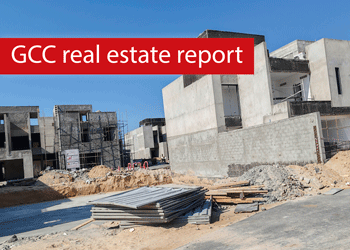 GCC real estate faces a more nuanced reality
GCC real estate faces a more nuanced reality3 July 2025
-

-
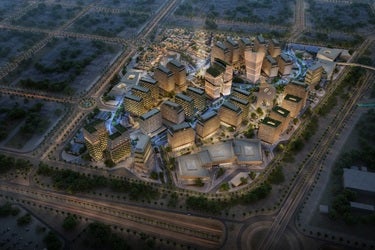
-
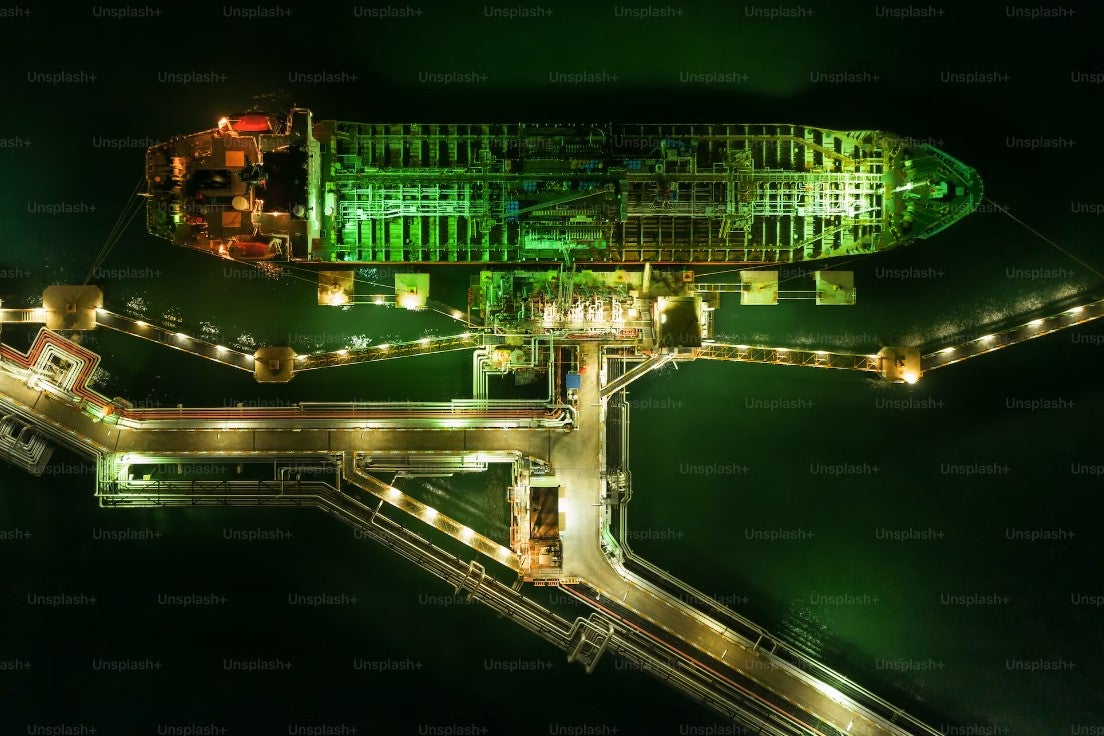
-
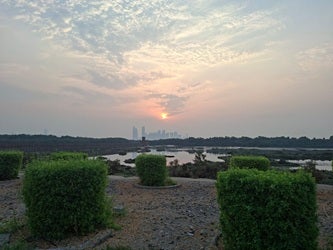
All of this is only 1% of what MEED.com has to offer
Subscribe now and unlock all the 153,671 articles on MEED.com
- All the latest news, data, and market intelligence across MENA at your fingerprints
- First-hand updates and inside information on projects, clients and competitors that matter to you
- 20 years' archive of information, data, and news for you to access at your convenience
- Strategize to succeed and minimise risks with timely analysis of current and future market trends
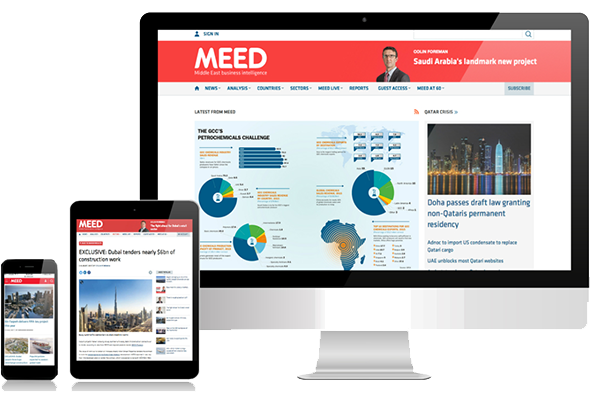
Related Articles
-
 GCC real estate faces a more nuanced reality
GCC real estate faces a more nuanced reality3 July 2025

The GCC real estate market in 2025-26 is characterised by dynamic growth, largely propelled by ambitious government-led diversification strategies and large-scale masterplanned projects.
Robust sales and significant development pipelines have been interpreted as indomitable market fundamentals across the region, particularly in Saudi Arabia and the UAE.
This year, a more balanced perspective has emerged that reveals new challenges as markets cope with external threats including a weakening global economy and regional geopolitical tensions, combined with domestic challenges such as oversupply and affordability.
Concerns about potential oversupply in certain residential and retail segments, especially in Dubai and Riyadh, are notable, with ratings agencies such as Fitch forecasting price corrections.
With so many real estate projects planned in the GCC region, the construction sector is poised for continued expansion, yet concerns are growing over delivery as capacity is constrained and contractors are becoming increasingly risk averse as their orderbooks fill.
Balancing population growth with project pipelines and the delivery of national visions will be critical in shaping the market’s performance in the future.
Investors and developers will need to navigate these complexities if they are to continue enjoying the success they have achieved in the past four years.
Bahrain
Bahrain’s real estate sector performed steadily in 2024, led by the residential market, which benefitted from demographic growth, improved affordability and supportive government initiatives.
Updated immigration policies such as the introduction of a Golden Visa programme have encouraged more expatriates to purchase properties, which has been stimulating demand.
The price of high-end apartments increased modestly year-on-year, with an increase of 1.4% in 2024, while villa prices remained stable, indicating strengthening demand for premium properties with modern amenities, according to real estate services company Savills.
There was an even greater increase in rental values, which rose by 23% across Bahrain in 2024, with the Capital Governorate accounting for 48% of rental transactions, Savills says.
The country’s commercial office market faced challenges in 2024, however, with limited demand and relatively flat rental growth, despite new developments such as SayaCorp Tower entering the market, Savills reports.
Conversely, Bahrain’s retail sector showed signs of recovery last year, driven by luxury brands opening new stores in Marassi Galleria, increasing foot traffic and demand.
For industrial space, larger warehouses saw a slight increase in rental rates, with a 2.1% year-on-year growth, while rates for smaller units remained stable, Savills says. This sector remains integral to Bahrain’s economic diversification strategy, with further infrastructure investments expected to support demand.
Kuwait
 Kuwait’s residential prices have softened over the past year. Overall residential sales in the first quarter of 2025 declined by 24% quarter-on-quarter, marking the weakest growth since Q2 2024, but only dipped by 2% year-on-year despite an 11.7% rise in transactions, potentially indicating a shift towards smaller or lower-value units in outer areas, according to National Bank of Kuwait (NBK).
Kuwait’s residential prices have softened over the past year. Overall residential sales in the first quarter of 2025 declined by 24% quarter-on-quarter, marking the weakest growth since Q2 2024, but only dipped by 2% year-on-year despite an 11.7% rise in transactions, potentially indicating a shift towards smaller or lower-value units in outer areas, according to National Bank of Kuwait (NBK). The residential price index remained negative, falling by 1.7% year-on-year in its eighth consecutive quarterly decline, although at a slower pace, suggesting abatement of downward pressure, NBK says.
The slowdown in residential sales in Q1 2025 indicates potential market sensitivity to seasonal factors and a normalisation from strong previous levels.
The fiscal deficit for 2025 is expected to be -4.2% of GDP, up from -3.1% in 2024 on the back of declining oil revenue due to lower prices.
Fiscal pressures could impact government spending on projects if oil prices remain low or decline even further.
Oman
Oman’s real estate sector is experiencing steady growth, supported by the country’s broader economic expansion.
The residential market has registered a 3.6% increase in supply, adding about 38,400 new units in 2024.
Despite the increase, occupancy rates remained stable at 85.2%, with villas and houses experiencing higher demand. The growth in residential supply is essential to meet the projected housing demand gap by 2035, which underscores the need for proactive planning to avoid potential shortfalls.
Oman’s tourism sector has also contributed positively to the real estate market, with guest arrivals at three- to five-star hotels up 3.6%, leading to a 6.1% rise in revenue. Hotel occupancy rates improved to 53.5%, indicating a gradual recovery in demand.
Looking ahead, Oman’s real estate sector is expected to benefit from government initiatives under Vision 2040, which aims to attract investment and foster economic diversification. Anticipated population and workforce growth will drive demand for housing and commercial properties.
Challenges such as market dynamics and potential delays in project completions will require careful management. Overall, the outlook for Oman’s real estate sector remains stable, with opportunities for strong growth in both residential and tourism-
related developments.
Qatar
 Qatar’s real estate market has continued to adapt to evolving demand patterns and macroeconomic conditions, according to real estate consultancy Knight Frank. While some sectors showed resilience, overall trends point to a period of moderation across the residential, commercial and retail segments.
Qatar’s real estate market has continued to adapt to evolving demand patterns and macroeconomic conditions, according to real estate consultancy Knight Frank. While some sectors showed resilience, overall trends point to a period of moderation across the residential, commercial and retail segments.In the residential sales market, average villa and apartment prices declined by 5% year-on-year. Despite the fall, demand for homes in locations such as Pearl Island and West Bay Lagoon remains stable. Abu Hamour recorded the highest average villa sale price at QR8,587 ($2,359) a square metre (sq m), while the Waterfront led the apartment segment at QR14,300/sq m.
Mortgage activity rose sharply, with a 168% year-on-year increase in Q4 2024, partly attributed to declining interest rates.
Rental rates in the villa segment dropped by 2.6% in 2024, averaging QR15,875 a month, although premium areas such as West Bay Lagoon continued to command higher rents. The apartment rental market remained relatively stable, with luxury developments such as Pearl Island seeing sustained demand and rents for three-bed properties averaging QR15,721 a month.
In the office market, Grade A rents dipped by 2.3%, settling at QR90/sq m. Prime areas like West Bay and Marina District remain in demand, although vacancy rates in secondary locations are contributing to downward rental pressure.
Retail rents declined by 1.5% amid increasing supply and shifting consumer behaviour. Lifestyle and experiential retail developments outperformed, while secondary malls faced growing competition.
E-commerce also continued to gain ground, with online sales surging 32% year-on-year in December 2024.
The outlook for Qatar’s real estate market will depend on the pace of economic diversification … and broader regional stability
Qatar’s hospitality sector saw marked improvements, supported by a 25% rise in tourist arrivals in 2024. Key performance indicators, including occupancy rates and revenue per available room, recorded double-digit growth, reflecting the country’s appeal as a leisure and business destination.
The outlook for Qatar’s real estate market will depend on the pace of economic diversification, infrastructure investment and broader regional stability. While high-end residential and hospitality sectors appear well positioned, other segments may find the outlook more challenging.
Saudi Arabia
 Saudi Arabia’s real estate market has displayed a mixed performance across all sectors, with momentum in residential and tourism-led hospitality markets counterbalanced by slower activity in the office and retail segments, according to real estate agency CBRE’s latest market review.
Saudi Arabia’s real estate market has displayed a mixed performance across all sectors, with momentum in residential and tourism-led hospitality markets counterbalanced by slower activity in the office and retail segments, according to real estate agency CBRE’s latest market review.In Riyadh, residential sales remained resilient, underpinned by population growth, ongoing reforms and increased demand from Saudi nationals and expatriates. Despite high mortgage rates, key developments such as Diriyah and King Salman Park continue to attract investor attention.
Demand in Jeddah is more subdued, with price growth stabilising after recent surges. Supply constraints and the government’s focus on increasing home ownership to 70% by 2030 remain influential drivers.
The hospitality sector showed significant growth, particularly in the religious and leisure tourism segments. Strong visitor numbers to Mecca and Madina supported high hotel occupancy rates, while developments in Al-Ula and the Red Sea contributed to the expansion of the kingdom’s tourism offering.
Saudi Arabia recorded a surge in international tourist arrivals, reflecting its broader push to diversify the economy through the Vision 2030 strategy. Major global hotel brands continued to announce new projects, signalling long-term confidence in the sector’s prospects.
The office market remained relatively stable, although demand patterns are evolving. In Riyadh, Grade A office spaces remained in demand amid limited supply, while older or lower-grade buildings experienced elevated vacancy levels.
In Jeddah and Dammam, activity was more modest, with tenants preferring flexible leasing arrangements. CBRE notes that public sector activity and government-backed gigaprojects continue to play a significant role in driving office demand.
Retail sector performance varied, with experiential and lifestyle-focused retail formats gaining traction, while traditional malls faced ongoing pressure from e-commerce growth and shifting consumer behaviours. Developments in Riyadh and Jeddah reflect a broader industry shift towards mixed-use destinations with entertainment and leisure at the core.
Looking ahead, Saudi Arabia’s real estate outlook remains cautiously optimistic. Continued progress on gigaprojects such as Neom, Qiddiya and the Red Sea developments are expected to support long-term demand across several asset classes.
However, affordability challenges, financing constraints and evolving global economic conditions could temper short-term momentum.
UAE
 After four strong years, Dubai’s residential market has shown signs of plateauing in 2025.
After four strong years, Dubai’s residential market has shown signs of plateauing in 2025. The market recorded more than 42,000 sales transactions in the first quarter of this year, reflecting a 10% quarterly decline due to fewer new project launches and seasonal factors, according to property consultant Cavendish Maxwell.
At the same time, year-on-year performance remained strong, with transaction volumes rising by 23.1% and total sales value reaching AED114.4bn ($31bn), a 29.6% increase.
Residential rents increased by 1% quarter-on-quarter and 14.4% year-on-year in Q1 2025, marking the slowest quarterly rise in two years. Gross rental yields averaged 7.3% for apartments and 5% for villas and townhouses in March 2025.
In May, Fitch Ratings forecast a residential price correction in Dubai, starting in H2 2025 into 2026, driven by a record increase in new supply. This is a direct cause-and-effect relationship, where past sales, leading to new projects, are now translating into future supply, which will likely dampen price growth.
Fitch Ratings forecasts a residential price correction in Dubai starting in H2 2025 into 2026, driven by a record increase in new supply
Residential prices surged approximately 60% between 2022 and Q1 2025. Simultaneously, a record number of new property projects were initiated in 2023-24, with a peak delivery of 120,000 units expected
in 2026.Fitch says that this average 16% increase in supply in 2025-27 will exceed the forecast population growth of about 5%. This imbalance is the direct cause of the predicted 15% fall in residential property prices.
Rental yields are already showing pressure. While a correction is anticipated, Fitch also notes that UAE banks and developers are well-equipped to handle the downturn due to improved leverage and capital buffers. This suggests that the market is maturing, and stakeholders have learnt from previous cycles, potentially leading to a moderate correction rather than a significant crash.
https://image.digitalinsightresearch.in/uploads/NewsArticle/14187809/main.gif -
 Iraq to start procurement for $1bn rail modernisation
Iraq to start procurement for $1bn rail modernisation2 July 2025

Iraq’s Ministry of Transport and its General Company for Railways division will soon start procurement for a $1bn-plus modernisation programme of its north-south main rail line.
Known as the Iraq Railways Extension & Modernisation (IREM) project, the scheme comprises the rehabilitation, upgrade and modernisation of 1,047 kilometres (km) of existing single-line track linking Umm Qasr Port in the south with Mosul in the north, running through Basra and Baghdad.
There will be two main construction packages. The first contract, expected to be tendered in October, covers:
- Renewal of 32km of track between Al-Yussifia and Baghdad, totalling 32km, with an estimated cost of $33m
- Renewal of 20km of track between Baghdad and Taji, totalling 20km, with an estimated cost of $21m
- Renewal of the line between Baiji and Mosul, totalling 189km, with an estimated cost of $197m
The second deal involves the largest element of the programme: an estimated $570m deal to install European Train Control System (ETCS) signalling and ducts for optical fibre along the entirety of the line, including a safety level-crossing protection system for all official crossings along the alignment, and the modernisation of selected train stations.
The package will also include the:
- Spot rehabilitation of the 72km-long Umm Qasr-Basr line, with an estimated cost of $4m
- Spot rehabilitation of the 520km-long section between Basra and Baghdad, with an estimated cost of $32m
Requests for proposals for this second deal are due to be issued in January 2026.
Before then, the client is expected to tender an estimated $15m contract for the capex management role on the scheme this month.
Iraq’s rail sector consists of a 2,272km standard gauge network with 115 stations, most of which are in poor condition and provide only limited transport options.
The system features two main routes: the north-south line and an east-west line running from Baghdad to near the Syrian border.
There are also several short branch lines. Service is limited, with a few freight trains carrying oil and grain, as well as passenger services, including an overnight Baghdad–Basra train and a weekly train to Samarra.
The southern section of the north-south line was partly restored in 2014, allowing trains to run up to 80km an hour (km/h) with a 25-tonne axle load.
The northern segment, from Baghdad to Rabiaa and linking to Syria, operates at 40-60 km/h with an axle load limit of 18-20 tonnes. This section sees limited and irregular freight movement and contains a major workshop at Baiji that will be refurbished under the programme at an estimated cost of $10m.
The modernised railway line is expected to carry 6.3 million tonnes of domestic freight, 1.1 million tonnes of exports and imports, and 2.85 million passengers by 2037.
The IREM project is a central component of Iraq’s Development Road (IDR) Initiative, which aims to position Iraq as a regional transportation hub linking the GCC states with Turkey and then Europe. In the long run, the network is hoped to connect with the planned GCC railway in Kuwait.
The launch of the project follows confirmation from the World Bank of a loan agreement worth $930m to fund almost all of the project.
Prior to the extension of the loan, Italy’s BTP Infrastrutture carried out the initial feasibility study and preliminary design work.
The firm is also conducting a similar contract covering a new multibillion-dollar 1,700km high-speed railway between Al-Faw on the Gulf coast and Fishkabour on the Syrian border, along with a major highway along the same alignment.
It has also been engaged on the design of the Al-Faw Grand Port project.
https://image.digitalinsightresearch.in/uploads/NewsArticle/14187478/main.gif -
 Hong Kong firm reveals $3bn Riyadh tech district design
Hong Kong firm reveals $3bn Riyadh tech district design2 July 2025
Register for MEED’s 14-day trial access
Hong Kong-headquartered architectural firm LWK & Partners has released details about the estimated SR12bn ($3.2bn) Pulse Wadi project, an upcoming technology and cybersecurity district located on the outskirts of Riyadh.
The project will span an area of over 600,000 square metres (sq m) with a gross floor area of about 1.14 million sq m.
In an official statement, the firm said that the project will be anchored by a government complex, two iconic headquarters, several cultural institutions and a dynamic cyber-research district.
At the centre of the district lies the central wadi plaza, which will be an events space.
LWK & Partners is the project’s lead design consultant, master planner, urban designer, design architect and landscape architect.
According to UK data analytics firm GlobalData, the construction industry in Saudi Arabia is expected to grow by 4.4% in real terms in 2025, supported by investments in the housing, energy, industrial and transport infrastructure sectors, coupled with investments in preparation for football’s Fifa World Cup 2034.
In November last year, the government approved the kingdom’s 2025 budget, which includes a total expenditure of SR1.3tn ($342.7bn) for this year.
The commercial construction sector is expected to grow by 3.7% in real terms in 2025, before registering an annual average growth rate of 3.7% in 2026-29, supported by investments in leisure and hospitality, retail, data centres and sports infrastructure projects.
https://image.digitalinsightresearch.in/uploads/NewsArticle/14187435/main.jpg -
 Indian contractor wins Ruwais LNG jetty construction
Indian contractor wins Ruwais LNG jetty construction2 July 2025
Register for MEED’s 14-day trial access
India-based ITD Cementation India has announced winning a contract worth $67.7m for jetty construction work on Abu Dhabi National Oil Company’s (Adnoc) upcoming liquefied natural gas (LNG) processing terminal at Ruwais in Abu Dhabi.
The job is understood to have been awarded by a consortium of France’s Technip Energies, Japan-based JGC Corporation and Abu Dhabi-owned NMDC Energy, the main contractors performing engineering, procurement and construction (EPC) works on the $5.5bn project.
Prior to awarding this sub-contract to ITD Cementation India, the consortium of Technip Energies, JGC Corporation and NMDC Energy awarded Abu Dhabi-based Dutch Foundations a contract to perform piling works on the Ruwais LNG project.
Also, in January, US-based midstream energy and storage services provider Chicago Bridge & Iron (CB&I) won an order from the main EPC consortium to supply two cryogenic tanks for the Ruwais LNG project. CB&I described the contract as “substantial”, a term it uses to denote values between $250m and $500m.
Ruwais LNG terminal project
The upcoming LNG export terminal in Ruwais will have the capacity to produce about 9.6 million tonnes a year (t/y) of LNG from two processing trains, each with a capacity of 4.8 million t/y. When the project is commissioned, Adnoc’s LNG production capacity will more than double to about 15 million t/y.
Adnoc awarded the full EPC contract to the consortium of Technip Energies, JGC Corporation and NMDC Energy, and achieved the final investment decision for the Ruwais LNG terminal complex in June last year.
The complex will also feature process units, storage tanks and an export jetty for loading cargoes and LNG bunkering, as well as utilities, flare handling systems and associated buildings.
The planned LNG facility will run on electric-powered rotary equipment and compressors instead of gas-fired units. Adnoc awarded a $400m contract in October 2023 to US-based Baker Hughes for the supply of all-electric compression systems for the project. The LNG trains will run on energy-efficient Baker Hughes technology, including compressors driven by 75MW electric motors.
Separately, Adnoc has also signed agreements with international energy companies to divest a total stake of 40% in the Ruwais LNG project.
UK energy producer BP, Japan's Mitsui & Co, London-headquartered Shell and French energy producer TotalEnergies will each hold 10% stakes in the Ruwais LNG terminal project, with Adnoc retaining the majority 60% stake in the facility.
Adnoc Group subsidiary Adnoc Gas will acquire its parent company’s 60% stake in the Ruwais LNG facility at cost in the second half of 2028, when first production from the complex is due.
ALSO READ: Adnoc to supply LNG to Mitsui from Ruwais project
https://image.digitalinsightresearch.in/uploads/NewsArticle/14186135/main.jpg -
 Firm wins $27m Dubai Ras Al-Khor wildlife sanctuary work
Firm wins $27m Dubai Ras Al-Khor wildlife sanctuary work2 July 2025

Austrian firm Waagner Biro, part of French engineering group Egis, has won a AED100m ($27m) contract for the first phase of the Ras Al-Khor wildlife sanctuary development project in Dubai.
Dubai Municipality awarded the contract.
The project’s first phase covers an area of over 6.4 square kilometres (sq km) and is expected to be completed by 2026.
The scope involves rehabilitating mangrove habitats and increasing mangrove coverage from 40 hectares to 65 hectares. This includes adding new irrigation channels, rehabilitating mangrove forests, creating new habitats such as the mangrove lake, north edge lake and reed ponds, and adding a green spine.
According to an official statement, the first phase also involves increasing the water bodies by 144%, expanding their total area to 74 hectares. Additionally, 10 hectares of mudflats will be added.
Dubai Municipality awards contract for first phase of AED650 million Ras Al Khor Wildlife Sanctuary Development Project. The initial phase of the project is expected to be completed by the end of 2026. The project is expected to multiply the number of visitors to the sanctuary… pic.twitter.com/iVsg5Qqq0p
— Dubai Media Office (@DXBMediaOffice) June 30, 2025
Ras Al-Khor Wildlife Sanctuary was established in 1985 and is on the list of wetlands of international importance under the Ramsar Convention 2007, making it the first Ramsar site in the UAE. Birdlife International has also declared it an important bird area.
https://image.digitalinsightresearch.in/uploads/NewsArticle/14185288/main.jpeg


